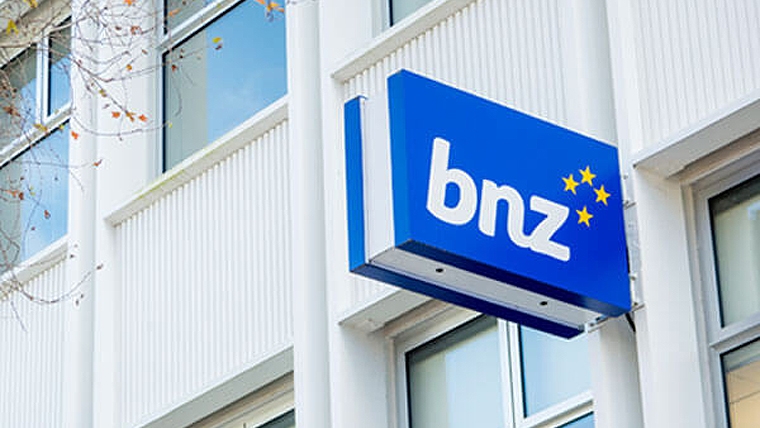
BNZ's annual profit dropped slightly as weaker non-interest income outweighed rising net interest income and lower expenses.
The bank's September-year net profit after tax dropped $7 million, or about 0.5%, to $1.499 billion, based on general disclosure statement figures, from $1.506 billion in the September 2024 year.
The profit drop came despite a six basis points increase in annual net interest margin to 2.43%, which BNZ largely attributes to its financial markets and treasury operations saying its core lending and deposits margin was weaker. The net interest margin is the difference between what the bank borrows money at through the likes of deposits and what it lends it out at. BNZ is owned by National Australia Bank (NAB), which posted a three basis points rise in net interest margin to 1.74%.
BNZ's net interest income rose $109 million, or 6%, to $3.077 billion. However, total operating income fell $132 million, or 4%, to $3.484 billion with reductions in gains less losses on financial instruments such as hedging and derivatives, and reduced non-interest income from fees. Last year's operating income also included a $103 million gain from the sale of BNZ Investment Services Ltd.
Operating expenses fell $13 million, or about 0.9%, to $1.379 billion.
The bank's credit impairment charge fell to $27 million from $146 million.
The bank's cost-to-income ratio, a measure of its operational efficiency, calculated by dividing its operating expenses by its operating income, rose 108 basis points to 39.6%.
"The result reflects the current economic environment as New Zealanders continue to navigate an economy that is taking longer than anticipated to recover," BNZ CEO Dan Huggins says.
"BNZ’s revenue decreased by 3.7% year-on-year. Total lending increased 4.6% with home lending up 6.4% [to $63.944 billion] and business lending up 2.2% [to 44.069 billion]."
"Over the past 12 months, we’ve focused on what matters most, supporting our customers and continuing to invest in initiatives to make banking simpler, easier and more accessible," says Huggins.
"Customers are making the most of the falling interest rate environment by paying their loans down faster, with more than 50% of customers’ home loan accounts projected to be ahead on their repayments by more than two years."
"BNZ has also seen significant growth in deposits, up 5.8% or $4.8 billion on the prior year to a record high of $87 billion," Huggins adds. Mot of the deposit growth came via on-demand and short-term deposits rather than term deposits.
He says despite the economic recovery taking longer than expected, BNZ sees reasons for optimism.
"Interest rates have fallen significantly, and New Zealand’s primary export sector is experiencing buoyant conditions driven by high export prices, a lower NZ dollar, and solid production. Manufacturing and tourism activity is recovering, and building consents and job ads are starting to lift after a long period of low activity," says Huggins.
BNZ's total assets increased $4.866 billion over the September year to $135.603 billion, with individually impaired assets up $139 million to $452 million.
BNZ paid $1.060 billion in annual ordinary dividends, down $245 million year-on-year.
In terms of market share, NAB says BNZ had 16.9% of housing lending at September 30 versus 16.7% a year earlier, 21.5% of agribusiness lending versus 21.6%, 22.7% of business lending versus 22.9%, and 18.4% of total deposits versus 18.3%.
There's detail on the NAB results via the links below.
Here's NAB's press release, its results analysis, and here's NAB's investor presentation.

We welcome your comments below. If you are not already registered, please register to comment
Remember we welcome robust, respectful and insightful debate. We don't welcome abusive or defamatory comments and will de-register those repeatedly making such comments. Our current comment policy is here.